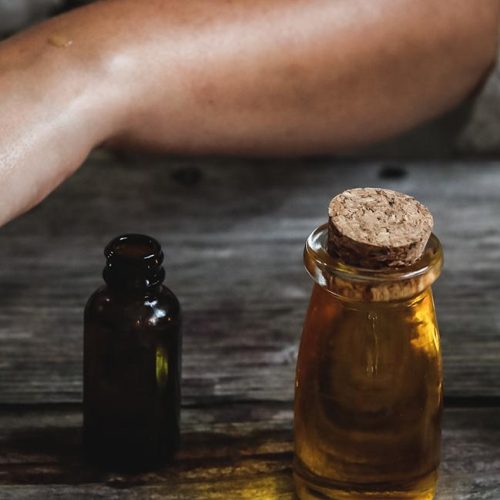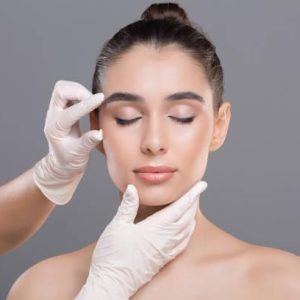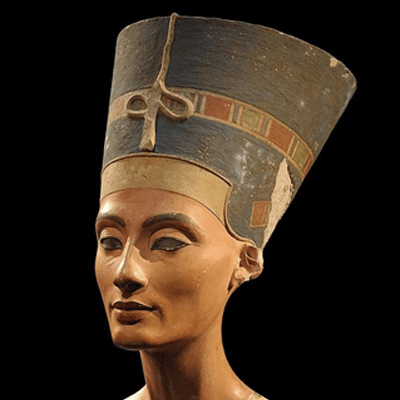There is a lot of snake oil (misleading out there), but we are here to help educate, so that you can make informed decisions. This section is dedicated to taking a deep dive into various aesthetics topics. Let’s get into it!


What is facial beauty and can we measure it?
Symmetry
There are many studies that have shown symmetrical faces are perceived as more attractive. We can make subtle changes to the face to increase symmetry that will increase perceived beauty without the alterations being detectable. Some evidence suggests that being attracted to a more symmetric face is most likely an evolutionary analogue for healthy genes.1
Clinical Pearl: We can use filler, collagen stimulators, and neurotoxins to help create a more symmetric face. Often altering subtle asymmetries will make you look more beautiful without anyone being able to put a finger on why you look better today than yesterday.
Sage Fact: A recent study demonstrated that men with symmetrical faces are correlated to having more sexual partners than those with less symmetric faces1
Averageness
There is also good evidence that “average” faces (faces without overly dramatic features) are also perceived as more attractive because the familiarity is easy for our mind to comprehend and appreciate. In fact, scientists have found that digitally combining and averaging hundreds of faces creates a more attractive result than any of the individual faces themselves.1
Clinical Pearl: We want to smooth out features that may be too pronounced. Neurotoxins and filler are an excellent tool for these corrections. The goal is not to create exaggerated features like huge cheeks or lips, but to create a proportional appearance with subtle features.
Sage Fact: Ironically, you will often see unique and distinctive non- “average” features in models that add a “little something different” and provide contrast from the norm to make them more memorable. This is why some models don’t jump off the page as “traditionally beautiful”.
The Golden Ratio
The golden ratio is a mathematical proportion in which a line cut in two has the shorter segment being proportionally the same to the longer segment as the longer segment is to the whole. More simply, it roughly translates to 1 part to 1.618 parts in length or size. For centuries, the golden ratio has been used by sculptures, painters, and architects to achieve aesthetic balance. The Greeks considered 1.6 to be the perfect number. When this 1 to 1.618 ratio is applied to facial aesthetics the ratio compares the height and width of different areas of the face. There is suggestive evidence that adjusting specific proportions of the face such as extending the chin or filling out the temples based on the golden ratio can help improve perceived beauty, however, the Golden Ratio should be treated more like a guideline rather than a law.3


Clinical Pearl: Using tools like collagen stimulators, fillers, or certain surgeries to create the golden ratio proportions in the face can help create a very natural and subtle increase in perceived beauty.
Sage Fact: This ratio can be seen in the bust of Queen Nefertiti, often considered an icon of feminine beauty in ancient Egypt.
Skin
The non-structural portion of beauty and the most common concern of our clients is their skin. A youthful look is one where skin is smooth, moisturized, and homogenous in color.1 As we age, our skin loses its elasticity, its thickness, and it develops wrinkles. Beautiful skin is acquired through consistent lifelong care.
Clinical Pearl: Neurotoxins can be used to improve the appearance of the skin by reducing fine lines and wrinkles. To rejuvenate the appearance of the skin we also need to stimulate new collagen and elastin. Injectable collagen stimulators and collagen induction therapy, such as microneedling with platelet rich plasma (PRP)4 trigger your body to increase collagen production. An increase in collagen and elastin allows for our skin to retain more moisture, and thus look more youthful.
How does your face age overtime?
Our facial bones, muscles, fat, ligaments, and skin all undergo changes as we age.
References:
1. Little AC, Jones BC, DeBruine LM. Facial attractiveness: evolutionary based research. Philos Trans R Soc Lond B Biol Sci. 2011 Jun 12;366(1571):1638-59. doi: 10.1098/rstb.2010.0404. PMID: 21536551; PMCID: PMC3130383.
https://www.ncbi.nlm.nih.gov/pmc/articles/PMC3130383/
2. Shamban A. The signature featureTM : A new concept in beauty. J Cosmet Dermatol. 2019 Jun;18(3):692-699. doi: 10.1111/jocd.12944. Epub 2019 Apr 4. PMID: 30950197.
https://pubmed.ncbi.nlm.nih.gov/30950197/
3. Hwang K, Park CY. The Divine Proportion: Origins and Usage in Plastic Surgery. Plast Reconstr Surg Glob Open. 2021 Feb 22;9(2):e3419. doi: 10.1097/GOX.0000000000003419. PMID: 33680667; PMCID: PMC7929632.
https://www.ncbi.nlm.nih.gov/pmc/articles/PMC7929632/
4. J.O. Cabrera-Ramírez, A.G. Puebla-Mora, A. González-Ojeda, D. García-Martínez, J.A. Cortés-Lares, A.R. Márquez-Valdéz, G.I. Contreras-Hernández, J. Bracamontes-Blanco, J.A. Saucedo-Ortíz, C. Fuentes-Orozco, Platelet-Rich Plasma for the Treatment of Photodamage of the Skin of the Hands, Actas Dermo-Sifiliográficas (English Edition), Volume 108, Issue 8, 2017, Pages 746-751, ISSN 1578-2190, https://doi.org/10.1016/j.adengl.2017.07.002.
https://www.sciencedirect.com/science/article/pii/S157821901730238X
